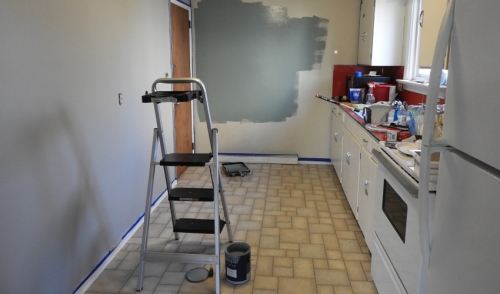- Location information 8 Convenient Locations

Once your clients hand you a remodeling job, it’s entirely up to you to turn their visions into a reality. Of course, even with the skills and resources you have, it’s not always possible to get started and complete the project at your own pace—sometimes, little headaches pop up that stall your remodel or even leave it in a standstill.
As you know, you can’t foresee everything. But there are several preventive steps you can take in order to complete every project as smoothly as possible. Here are five suggestions to help make remodels headache-free.
1. Plan Everything Thoroughly
One of the first lessons you’ll learn is the importance of planning. You can’t just walk into a room and start swinging your sledgehammer, no matter what they show on home improvement shows on TV. You know how much has to happen before any demolition can start.
Before every single job, outline everything you need to do in order before springing into action. The resulting to-do list will become an important part of almost every task (including some of the ones suggested on this list).
There are many benefits of to-do listing, too. A to-do list can help you turn lofty goals into concrete tasks and steps. It can also help you foresee potential snags and smooth them out before you even have to face them. Those two reasons alone should be enough to inspire you to create a to-do list before your next job.
2. Create a Timeline
Here’s a perfect example of how a to-do list can become a vital part of planning. Once you write down every step your remodeling project will require, you can draw out a timeline that shows what has to happen first in order for the next step to take place, and so on.
Not every timeline will be perfect, of course, and unforeseen circumstances can always throw you off schedule. But giving your client an idea of when you finish—and actually deciding what will get done each day, how long a particular facet of the remodel will take, etc.—will make you seem more organized, reliable and hard-working. And, with a calendar to guide you and your team every day, you will be.
3. Start From the Ground Up
Here’s another approach to outlining your project schedule: if you’re building an addition or new structure, start your list exactly where the project will begin. Think about the structure of a home and what you will need to do in order to secure each layer. Add your project's tasks to your schedule in the same order as you’d build them.
Even if you’re not building an entirely new structure, follow a home construction’s loose structure so that you’re doing everything in order.
4. Schedule Material Deliveries
With your schedule in hand, you can begin to figure out what supplies you’ll need and when you'll need them. Thanks to your to-do list and the resulting calendar, you’ll easily be able to figure out when to have certain products dropped off, and plan for how much each delivery will cost.
Again, you never know when an additional cost might arise, but having a general idea of what you need, when you need it, and what it will cost will make each delivery easier to handle—and every price tag easier to swallow.
5. Get All the Legalities Smoothed Out
Finally, before you start building, you might have to get permission. We’re not just talking about your client’s permission to renovate (which you probably already have). Instead, you have to obtain the green light from local authorities.
You’ll have to consider both zoning regulations and building codes. Zoning regulations vary from city to city, neighborhood to neighborhood. They outline what types of structures can be built and where. If you want to construct a new structure or make major changes to an existing one, then you’ll want to get permission from a zoning department to build.
Once you’re cleared in the zoning department, you’ll want to familiarize yourself with building codes. These regulate the buildings themselves: how safe and accessible they are and what they look like from the outside are usually the most important. Hopefully you already know this, but it’s always good to reiterate pre-remodel: Make sure everything is up to code in your designs so that they’re up to code once they’re built, too.
With these five steps in action, you and your clients will be pleased—and perhaps even shocked—at how smoothly your remodel goes. So, get to planning, keep an eye on the timeline you create, and obtain all of the permission you need before getting to work. Then, make your clients' renovation dreams come true.